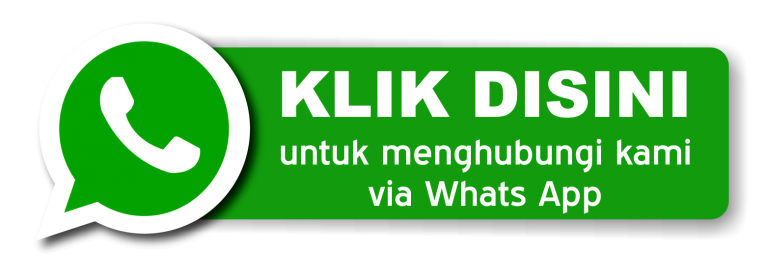Pengaruh Work-life Balance, Lingkungan Kerja dan Kepuasan Kerja terhadap Kinerja Karyawan (Studi pada Generasi Milenial di Gading Serpong)
DOI:
https://doi.org/10.32585/jbfe.v3i2.4270Abstract
Employees are an added value for the company. They play a crucial role in achieving the company's vision and goals. To keep employee productivity optimal, it is important to pay attention to their satisfaction. One important factor in employee job satisfaction is creating a balance between work and personal life and creating a comfortable work environment. The research aims to determine the effect of work-life balance, work environment and job satisfaction on the performance of millennial generation employees in Gading Serpong. This type of research uses quantitative methods. The sampling technique uses a non-probability sampling technique with a simple random sampling method. The data collection method uses primary data obtained from questionnaires distributed to 150 millennial employee respondents in Gading Serpong who were used as research objects. The data analysis technique uses multiple regression analysis with t, F and R2 tests using SPSS 25. The results of this study indicate that work-life balance has an effect on employee performance, the work environment has an effect on employee performance, job satisfaction has an effect on employee performance and, Simultaneous Work-life balance, work environment and job satisfaction affect employee performance.Downloads
References
Aliya, G. R., & Saragih, R. (2020). PengaruhWork-Life Balance danLingkungan KerjaTerhadap Kepuasan Kerja Karyawan Di PTTelkom DivisiTelkom Regional III JawaBarat. Jurnal Ilmiah MEA (Manajemen, Ekonomi, dan Akuntansi, 84-95.
Amelia, R. H. (2021). Analisis Online Cunsumer Review Terhadap Keputusan Pembelian Pada E-commerce Kecantikan. Jurnal Indonesia Sosial Teknologi.
Asepta, U. Y., & Maruno, S. H. (2017). Analisis Pengaruh Work-life Balance dan Pengembangan Karir Terhadap Kepuasan Kerja Karyawan PT. Telkomsel, TBK Branch Malang. Jurnal Jibeka Volume 11 No. 1, 77-85.
Direktorat Statistik Kependudukan dan Ketenagakerjaan. (2022). Indikator Pasar Tenaga Kerja Indonesia Februari. Jakarta: Badan Pusat Statistik.
Dr. Hartini, S.E., M.M. (2021). Kinerja Karyawan (Era Transformasi Digital). Bandung: Media Sains Indonesia.
Ghozali, I. (2016). Aplikasi Analisis Multovariate Dengan Program IBM SPSS 23. Semarang: Badan Penerbit Universitas Diponegoro.
Hasibuan, M. (2020). Manajemen Sumber Daya Manusia (Revisi). Jakarta: PT Bumi Aksara.
Herianto, J. N. (2021). Konsep Uji Validitas dan Reabilitas Dengan Menggunakan SPSS. 1-12.
Hidayat, A. (2013). Statistikian, Uji Normalitas. Retrieved from www.statistikian.com.
Indra, F. J., & Rialmi, Z. (2022). Pengaruh Work-Life Balance, Burnout, dan Lingkungan Kerja terhadap Kepuasan Kerja Karyawan (Studi Kasus pada Karyawan PT Meka Eduversity Komunikasi). Jurnal Ilmu Pengetahuan Teknologi dan Humaniora , 90-99.
Larasati, S. (2018). Manajemen Sumber Daya Manusia. Sleman: CV Budi Utama.
Mangkunegara, A. A. (2017). Manajemen Sumber Daya Manusia.
Mardiani, I. N. (2021). Pengaruh work-life balance, Lingkungan Kerja dan Kompensasi terhadap Kinerja karyawan PT Gunanusa Eramandiri. Jurnal Ekonomi & Ekonomi Syariah, 985-993.
Michael Benando Palar, L. D. (2022). Pengaruh Work-life Balance dan Lingkungan Kerja Terhadap Kinerja Karyawan Pada PT. PLN(Persero) Area Manado. Jurnal Emba Vol. 10 No. 1, 772-780.
Muhammad Omarreyhan Natakusumah, S. H. (2022). Pengaruh Work-life Balance, Lingkungan Kerja dan Keterikatan Kerja Terhadap Kinerja Karyawan Coffeshop di Perumahan Kota Wisata Cibubur, Kabupaten Bogor. Jurnal Ilmu Manajemen, 133-143.
Muliawati, T., & Frianto, A. (2020). Pengaruh Work-life Balance dan Kepuasan Kerja Terhadap Kinerja Karyawan Milenial: Studi Literatur. Jurnal Ilmu Manajemen Volume XX Nomor XX, 606-620.
Pitoyo, D. J., & Handayani, W. P. (2022). Pengaruh Work Life Balance dan Lingkungan KerjaTerhadap Kepuasan Kerja Karyawan. Jurnal Studi Manajemen dan Bisnis, 152-159.
Putu Meidita Larastrini, I. G. (2019). Pengaruh Kepuasan Kerja Lingkungan Kerja dan Work-life Balance terhadap Loyalitas Karyawan. E-Jurnal Manajemen, 3674-3699.
Raymond A. Noe, J. R. (2010). Manajemen Sumber Daya Manusia: Mencapai Keunggulan Bersaing Edisi 6 Buku 1. Jakarta: Salemba Empat.
S, R. (2014). Spssindonesia.com. Retrieved from Tutorial SPSS Uji Asumsi Klasik.
S, S. (2010). Statistik Parametrik Jakarta: PT Elex Media Komputindo.
Side.id. (2022). Jangan Salah Kaprah, Ini Beda Serpong dan Gading Serpong. Retrieved from Side.id: https://www.side.id/dn/jangan-salah-kaprah-ini-beda-serpong-dan-gading-serpong
Sofiliya, R. (2020). Pengaruh Work-life Balance dan Lingkungan Kerja terhadap Kepuasan Kerja Karyawan di Bank Syariah Mandiri Kantor Cabang Palembang.
Sudana, I. M. (2018). Metode Penelitian Bisnis & Analisis data dengan SPSS. Jurnal Jakarta Erlangga.
Sugiyono. (2017). Metode Penelitian Kualitatif, Kuantitatif dan R&D. Bandung; Alfabeta.
Suhartini. (2021). Pengaruh Work Life Balance dan Lingkungan Kerja Non Fisik Terhadap Kinerja Karyawan di PT Polychem Indonesia Tbk. (Divisi Mesin). Jurnal eCo-Buss, 122-131.
Tangerang, B. P. (2022). Indikator Kesejahteraan Rakyat Kabupaten Tangerang. Kabupaten Tangerang: Badan Pusat Statistik Kabupaten Tangerang.
Yandra Rivaldo, S. M. (2022). Peningkatan Kinerja Karyawan. Bojongsari: Eureka Media Aksara.
Downloads
Published
How to Cite
Issue
Section
License
Authors who publish with the Journal Of Business, Finance, and Economics (JBFE) agree to the following terms:
- Authors retain copyright and grant the journal the right of first publication with the work simultaneously licensed under a Creative Commons Attribution License (CC BY-SA 4.0) that allows others to share the work with an acknowledgment of the work's authorship and initial publication in this journal.
- Authors are able to enter into separate, additional contractual arrangements for the non-exclusive distribution of the journal's published version of the work (e.g., post it to an institutional repository or publish it in a book), with an acknowledgment of its initial publication in this journal.
- Authors are permitted and encouraged to post their work online (e.g., in institutional repositories or on their website) prior to and during the submission process, as it can lead to productive exchanges, as well as earlier and greater citation of published work.












